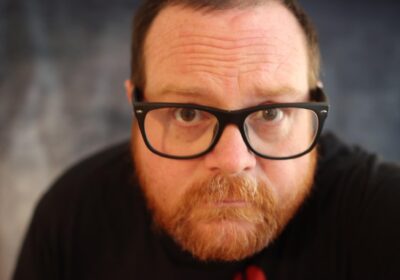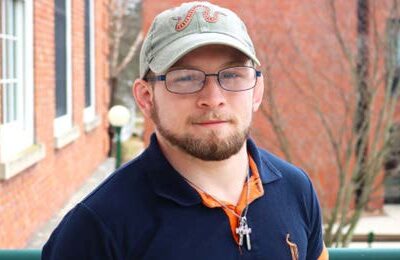Study abroad London style
Castleton offers a semester long program at Roehampton University that is open to students in all majors. Seven CSC students spent a semester there two years ago, and four students are studying there this spring. The students will be sharing their impressions and experiences with the Castleton community from time to time. There will be an information meeting about the program on Feb. 21 at 12:30. Interested students can contact Professor Roy Vestrich, who shares some of his thoughts about London in this issue.
I made my first trip to London the autumn of 1978. I was 25 years old and trying to figure out how to support myself as an aspiring poet and painter in world that did not seem to value such pursuits. My uncle, a well-known modern dance choreographer working in London, invited me to spend time with him in England and then in France to help restore a rambling stone wreck of a house he had purchased in a small village in Provence.
So, I got out my passport, quit my job at a Boston art gallery, said goodbye to my girlfriend and took my first flight across the Atlantic. And as one love affair ended, others began, this time with the city of London, with the countryside of France and with travel itself.
Over the years, I have spent time in many other cities in the States, in Europe, and more recently in Australia and China, but there is something about London that always draws me back. And much like the Clash’s London Calling, which is often used as a tourist anthem for the city, my London is not the idealized version of polite people riding double-decker buses, or having tea and scones at Harrods, but a much earthier place that is both beautiful and ugly, and a culture that is both familiar and strange. It is a place that can feel welcoming one minute and closed off the next.
For more than three decades, I have watched the city change in the manner that only an occasional visitor might, sort of the way distant relatives might react to the changes in a child they only see in five- or 10-year intervals. “My have you grown,” elder cousins might observe, pinching a cheek, or patting a head with a sudden sense that the image in their heads no longer matches the reality.
Seeing London in spurts over time is like that. Despite the visible history as you walk the streets, the Roman ruins, the Medieval architecture, and even shops set in alleys that look like sets from a Shakespeare play, London is a vibrant, contemporary and ever-changing city.
In January, as I walked along a path in the Tower of London with our group of four Castleton students, I was awed by all the new glass buildings rising high in the skyline. Though I had been in London several times during the past five years, I was struck at how quickly the city evolved. Through the lens of my camera I could see the reflections of ancient towers in the fresh ultra-modern facades.
It hit me that for these Castleton students, this view would be part of the yardstick by which they would measure the cityscape for decades to come. What will London look if they return in 35 years?
But it not just the skyline that has changed, the culture itself has been altered. In the seventies, London was already a modern international city, but it felt very British from the food to the accents. Now it is likely you will hear conversations in Polish or French or Italian as you ride the tube.
You are also more likely to encounter a familiar American fast food outlet or a Thai or Greek restaurant, than a corner fish and chips shop. Even though the British did not adopt the Euro as a currency, the impact of the European Union and international immigration is very much in evidence in the city.
I know that my travels in Europe, Latin America, Australia, and Asia have been as important a part of my education as my years as an undergraduate and graduate student. They are a part of what defines me, of what inspires me, and of how I come to see and understand the world we live in. For me, London will always be a special place, a place that opened a door to the world.







